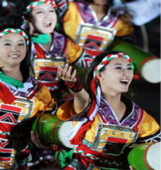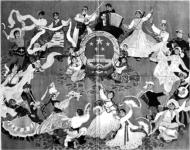Mauritius, an island country in the Indian Ocean, is located off the eastern coast of Africa. Here is something to let you know better about it before your trip.
Plants and Animals
There are many kinds of native wild plant species in Mauritius even though little original forest is left. The wild animals include the sambar (a long-tailed, dark brown deer) as well as a variety of birds and insects. The island was once home to the dodo, a flightless bird that was extinct in the late 17th century.
Education and Languages
The education structure consists of three years of pre-primary school. Six years of free primary education begins at age five, which is followed by up to seven years of secondary education. English is the official language of Mauritius, but French and Creole are also spoken. Some other languages are also spoken by different communities.
Sports and Entertainment
Football here claims the greatest number of participants and fans. Mauritians from all communities make winter horse racing one of the most popular and highly attended sporting activities of the year. And Black River Gorges National Park, Trou aux Cerfs, an inactive volcano, which is now heavily forested, and the island’s numerous beaches are surely great places to visit.
Transportation and Telecommunications
Almost all roadways are paved throughout the island. Most of the country’s shipping activity is conducted through port facilities at Port Louis. An international airport is located at Plaisance. In 2021, network coverage with the 5G standard was already 4.5% of all inhabitants. The proportion of the population with at least 4G mobile Internet access was 99%.
To get more information about Mauritius, click here.
【小题1】What can we learn about the plants and animals in Mauritius from the text?| A.They are single. | B.They are various. |
| C.They are mostly flightless. | D.They are mostly domestic. |
| A.It is free for all ages. | B.It lacks English and French instruction. |
| C.It includes 16 years of primary education. | D.It covers 13 years of primary and secondary education. |
| A.Port shipping is popular. | B.5G technology has not yet started. |
| C.4G network coverage is no more than half. | D.Horse racing claims the greatest number of fans. |
School lunches in Japan
Japan manages a rare achievement for a developed country when it comes to feeding its children ― high scores for nutrition but very low obesity rates. One major key? School lunches.
A landmark report by the UN's children agency UNICEF released Tuesday shows Japan topping the charts for childhood health indicators, with low rates of infant mortality and few underweight children.
Experts say there are various factors at work, including a health-conscious society and regularly check-ups for children required by law, but a nationwide school lunch program also plays a key role.
"School lunches with menus that are created by nutritionists are provided to all primary schools and the majority of junior high schools throughout Japan,," Mitsuhiko Hara, a pediatrician and professor at Tokyo Kasei Gakuin University, told AFP.
The lunches are mandatory — no packed lunches allowed ― and while they are not free for most, they are heavily subsidized 补助).Each meal is designed to have around 600-700 calories balanced between carbohydrates, meat or fish and vegetables.
"School lunch is designed to provide nutrition that tends to be lacking in meals at home," Education Ministry official Mayumi Ueda told AFP. "I think it contributes to the nutritional balance necessary for children."
Unlike the cafeteria system operated in some Western countries, Japanese school lunches are usually served in the classroom. Pupils frequently dish out the food to each other and clean up the room afterwards. There is no choice of meal, and no concessions offered for vegetarians, or anyone with religious restrictions.
The lunches are intended not only to feed children, but to teach them. "There's also a daily broadcast at school to explain the nutritional elements contained in the school lunch of the day, and this is a good way to educate kids,” Hara said.
"School lunch is positioned as part of education under the law,'? Ueda said. "It's not just about eating food, but children learn to serve, and clean up on their own?"
The Japanese government studies nutrition and eating habits in Japan annually, and uses the results to shape what goes into the school meals, she added.
And there are other factors at work, Hara acknowledged. "Because many Japanese are health-conscious, they try to eat a variety of food, which is good," he said. "And we're taught to eat seasonal food, which also contributes to good health. Japan is one of the rare countries that pay so much attention to food that is associated with specific seasons," he added.
Hara said another factor in Japan is regularly mandated childcare health checks. Parents of infants receive reminders from the local government, and children are given health checks at school, including measuring height and weight.
Still, even Japan has not escaped entirely the growing trend toward overweight children and childhood obesity, which in Japan, like elsewhere, tends to affect those from less wealthy families.
"Children in poverty are more likely to be overweight because families try to cut costs," Hara said. "As a result, they eat less protein but consume more carbs and sugar, which leads to obesity."
School lunches are all the more important to children in such situations, he said.
School lunches in Japan | ||
| Introduction | As is reported by the UNICEF. Japan social awareness of health, regular and | |
| Details of school lunches | Regarding health | • Menus created by nutritionists and • Meals • Food of great • Official reminders of childcare health checks |
| Regarding | The lunches are intended to improve • students' service consciousness and • students' knowledge of nutritional elements. | |
| Problems to be solved | ||
There are many different types of houses in the UK. You may see detached, semi-detached, terraced houses or even end-of-terrace houses on a typical street. You might see apartments in wealthier parts of town, or people living in bungalows, preferring to live a life without stairs. Strange cottages may dot the countryside, while heading to the cities you could see any number of types of flats, including houses turned into flats, studios and duplexes. But one thing you will notice is that many houses come from different eras, and asking a British person about their ideal home, many of them will have a specific period property in mind.
For some, it could be Victorian houses, which are often seen with bay windows, high ceilings, stained glass doors and colored brickwork. During the Victorian era, a huge number of houses, particularly terraced, were built in towns and cities to accommodate vast numbers of workers who were moving from more rural areas.
Georgian architecture refers to houses built during the period of 1714 and 1830 during the rules of four British monarchs. Usually houses with this architectural style have a more symmetrical theme, both internally and externally, with a small square garden in front. For those not into older properties, new builds from the 1990s onwards offer better insulation against the cold and newer electrics. And those who prefer less repairs could always go with the open-plan or minimalist look of the modern era.
So, whether it’s high ceilings, better insulation, brickwork, bungalows or square gardens, people in Britain have a wide variety of preferences when it comes to where they live. And their ideal home may just simply be a case of what style feels like home.
【小题1】What do the Victorian houses have?| A.A small square garden in front. | B.High ceilings and colored brickwork. |
| C.A more symmetrical theme than any other era. | D.Broken windows and stainless doors. |
| A.To display the wisdom of the architects. | B.To introduce the origin of them. |
| C.To attract people fond of British houses. | D.To show the diversity of British houses. |
| A.The preference of British for the houses. | B.The history of the Georgian houses. |
| C.The house structures of Britain. | D.The fine scenery in Britain. |
| A.Ideal British home. | B.Terraced houses. |
| C.Georgian houses. | D.Square and gardens. |
组卷网是一个信息分享及获取的平台,不能确保所有知识产权权属清晰,如您发现相关试题侵犯您的合法权益,请联系组卷网





